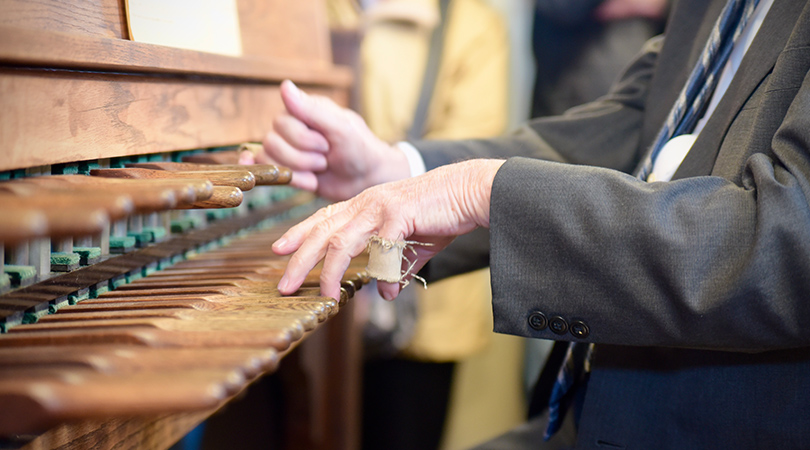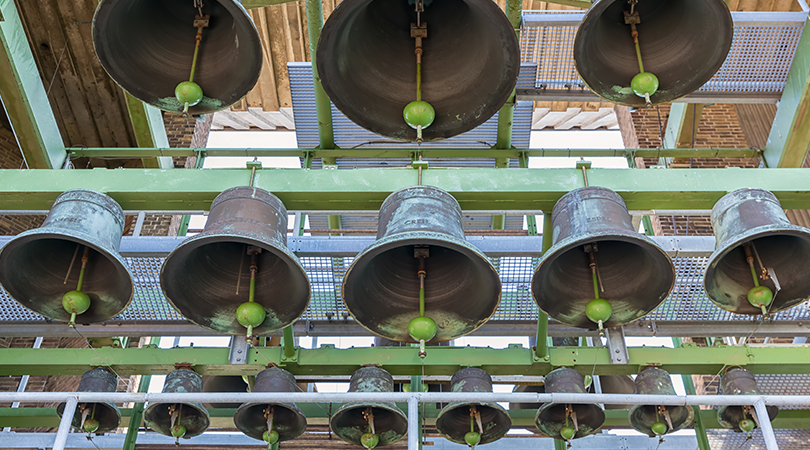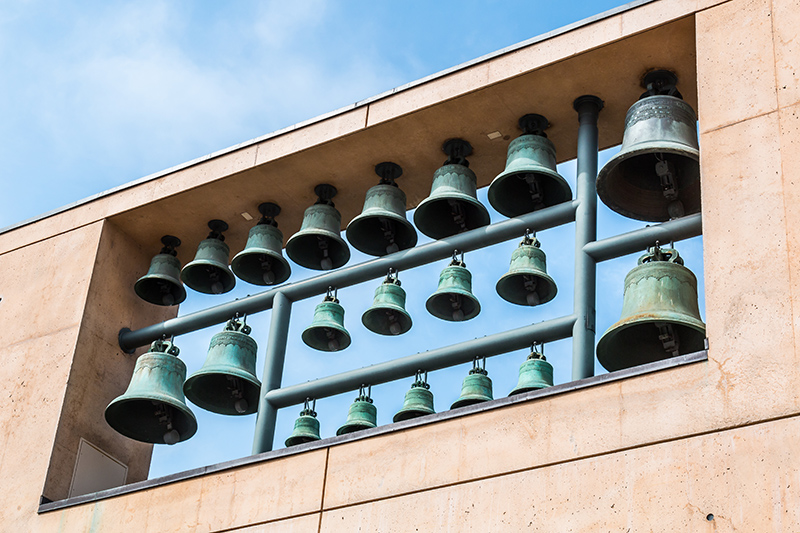A carillon is a musical instrument of bells. Typically housed in a purpose-built bell tower or belfry, a carillon consists of at least 23 harmonically-tuned bells. The cup-shaped bells are hung fixed in a frame (what a campanologist would call “dead” rather than “swinging”). A carillonneur, or someone who plays the carillon, then operates a mechanism not unlike an organ, which signals an intricate system of internal clappers or external hammers to sound the bells.
Much like a pianist, a carillonneur can create chords, harmonies, and melodies on their instrument – sending elegant tunes wafting across the rooftops. The more bells comprising the carillon and the more talented the carillonneur, the more dynamic expressions and range of music that can be produced. Some carillons are also equipped with additional mechanisms that allow them to be played automatically without a carillonneur present.

Moser Tower in Naperville, Illinois, was built in 1999 to commemorate the turn of the 21st century and houses the Millennium Carillon.
In German, a carillon is called a Glockenspiel, but this shouldn’t be confused with the tinny percussion keyboard of the same name. Together with organs, carillons are some of the heaviest instruments in the world and can weigh tens of thousands of pounds. Thankfully for students of the carillon, the bells never have to move (unless, of course, a foundry is working to restore them). Smaller instruments of 8 to 22 tower bells are called chimes.
Cover image: View from below of carillon bells arranged in a bell tower.







